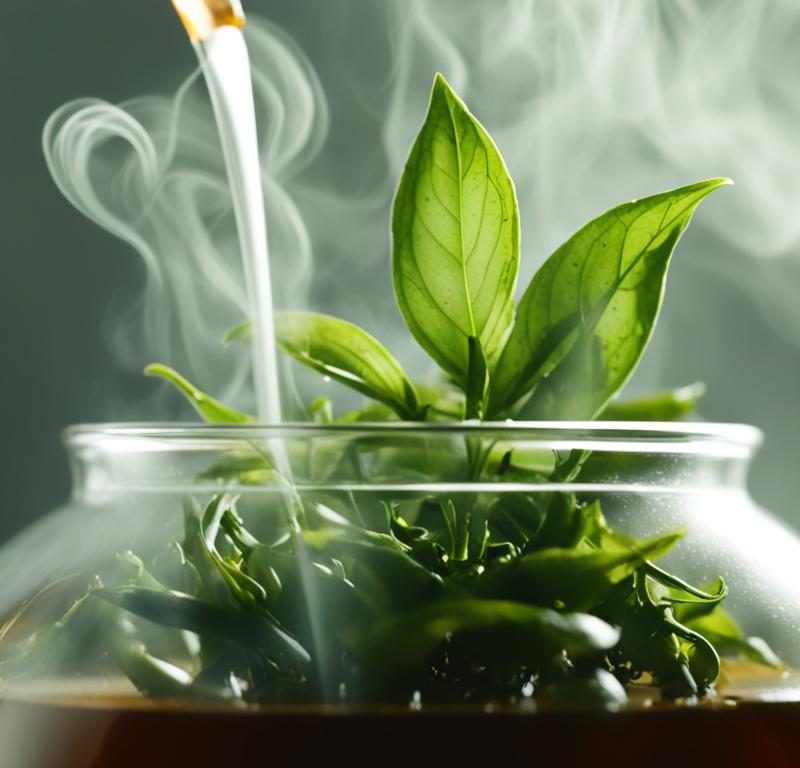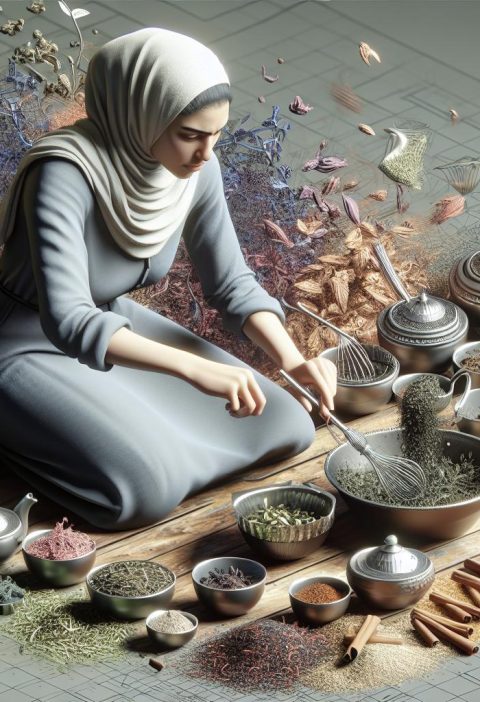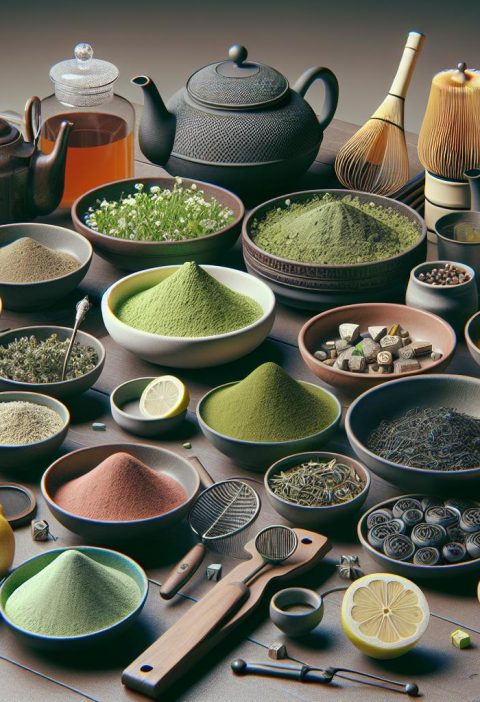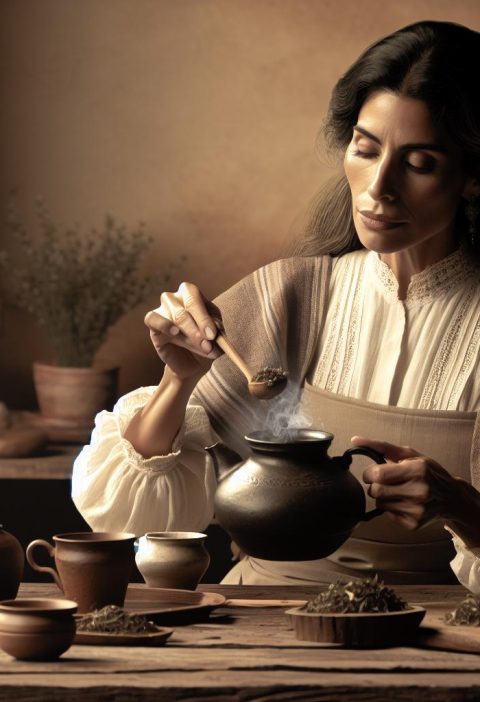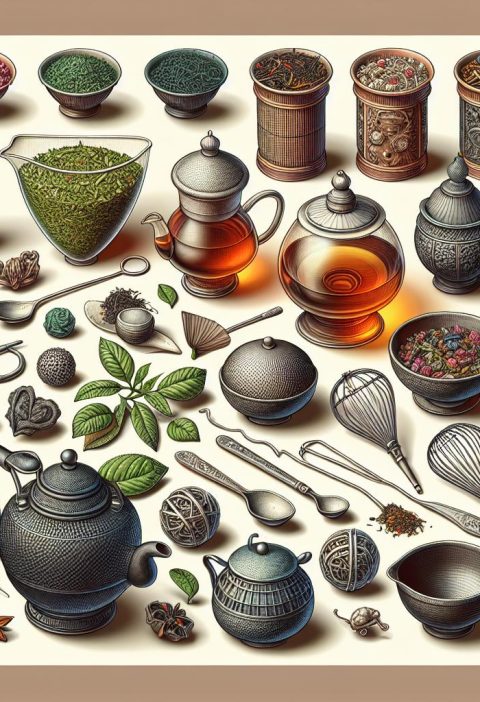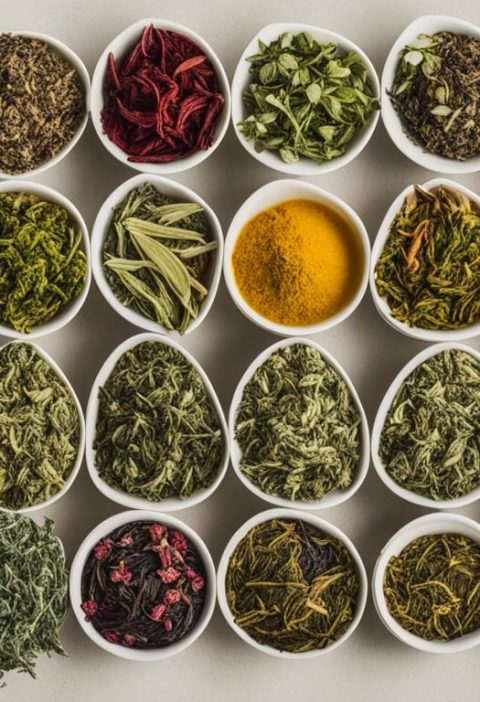Tea brewing is a fascinating process that goes far beyond just steeping tea leaves in hot water. It involves a series of chemical reactions and interactions that contribute to the flavors, aromas, and colors we experience in our cup of tea. Understanding the science behind steeping tea leaves can help tea enthusiasts unlock the full potential of their brews and create the perfect cup every time. From the optimal steeping time to the temperature and tea leaf-to-water ratio, each element plays a crucial role in the final outcome. In this article, we’ll delve into the science behind steeping tea leaves, exploring the factors that affect the chemical composition of steeped tea, the importance of water quality, and the various steeping techniques. Get ready to embark on a journey through the art and science of brewing the perfect cup of tea.
Key Takeaways
- Steeping is the process of infusing tea leaves in water to extract soluble compounds and create a flavorful beverage.
- The type of tea, water quality, surface area of the leaves, ratio of leaves to water, and steeping temperature and time all play a role in the science behind steeping tea leaves.
- The chemical composition of steeped tea is influenced by the type of tea, water quality, surface area of the leaves, ratio of leaves to water, steeping temperature, and length of time.
- Water quality is crucial for optimal tea steeping, with factors like mineral content, hardness, and pH level affecting taste and overall quality.
- The surface area of the leaves and the ratio of leaves to water impact the strength of the brewed tea.
- Steeping time determines the flavor and compounds extracted from the tea leaves, with oversteeping leading to bitterness and shorter steeping times resulting in weaker brews.
- Gong Fu Cha and Western style brewing are two popular steeping techniques, each with its own unique characteristics and traditions.
The Process of Steeping Tea Leaves
When it comes to brewing tea, the process of steeping is where the magic happens. Steeping involves the infusion of tea leaves in water, allowing the flavors, aromas, and colors to be extracted and create a delightful beverage. Let’s dive deeper into the intricate details of how tea leaves are transformed during the steeping process.
When tea leaves are introduced to water, they undergo a rehydration process, absorbing the water and kickstarting the steeping process. As the water penetrates the leaves, a series of chemical reactions occur, leading to the extraction of several soluble compounds. These compounds include polyphenols, amino acids, enzymes, pigments, carbohydrates, alkaloids, minerals, and volatiles, each contributing to the distinct characteristics of the brewed tea.
Diffusion is the key mechanism by which the soluble compounds are extracted from the tea leaves and dissolved into the water. During diffusion, the compounds move from an area of higher concentration (the tea leaves) to an area of lower concentration (the surrounding water). Through this process, the flavors and aromas unique to each type of tea are released into the liquid, enriching the brew with their delightful qualities.
Oxidation is another crucial element to consider during the steeping process. When tea leaves are exposed to oxygen, they undergo a natural oxidation process, transforming their chemical composition and further influencing the flavor profile of the brewed tea. For example, black tea is fully oxidized, resulting in a robust and robust flavor, while green tea undergoes minimal oxidation, retaining its fresh and vibrant character.
Now that we have uncovered the process behind steeping tea leaves, we can appreciate the intricate dance of chemical reactions and flavor extraction that takes place in every cup. The next time you brew a cup of tea, take a moment to savor not only the delightful flavors but also the science that unfolds in your teacup.
| Key Points | Benefits |
|---|---|
| Steeping extracts soluble compounds from tea leaves | -Creates a flavorful and aromatic beverage -Allows for the enjoyment of different tea types -Chemical reactions lead to diverse flavor profiles |
| Oxidation affects flavor | -Black tea: fully oxidized, robust flavor -Green tea: minimal oxidation, fresh and vibrant flavor |
| Diffusion plays a role in flavor extraction | -Transfers soluble compounds from leaves to water -Enriches the brew with distinct flavors and aromas |
Factors Affecting the Chemical Composition of Steeped Tea
The chemical composition of steeped tea is influenced by various factors that contribute to its taste, color, and body. Understanding these factors can help us brew the perfect cup of tea. Let’s take a closer look at each of these key elements:
Types of Tea
The type of tea we choose plays a significant role in its chemical composition. Different types, such as black, green, oolong, and white tea, undergo various processing steps that determine the types and amounts of chemical compounds present in the leaves. These compounds include polyphenols, catechins, flavonoids, amino acids, and more, all of which contribute to the unique flavors and health benefits of each tea variety.
Chemical Compounds in Tea Leaves
Tea leaves contain a wide range of chemical compounds that affect the flavor, aroma, and overall quality of the brewed tea. These compounds include antioxidants, caffeine, theanine, and volatile aromatic compounds. The specific combination and concentration of these compounds vary depending on the type of tea and the growing conditions of the tea plants.
Water Quality
The quality of the water used for steeping tea can greatly impact the chemical composition of the final brew. The mineral content, pH level, and overall cleanliness of the water can affect the extraction of compounds from the tea leaves. Ideally, we should use filtered or spring water that is free from impurities and has a balanced mineral content.
Surface Area of the Leaves
The surface area of the tea leaves also plays a role in the chemical composition of the steeped tea. Teas with larger leaves have a smaller surface area compared to teas with broken or smaller leaves. This difference in surface area affects the rate at which compounds are extracted during steeping, ultimately impacting the strength and flavor of the brewed tea.
Ratio of Leaves to Water
The ratio of tea leaves to water used in the steeping process directly affects the concentration of compounds in the brewed tea. A higher ratio of leaves to water can result in a stronger brew with more intense flavors, while a lower ratio may yield a milder cup. Finding the right balance is important to achieve the desired taste and strength.
Steeping Temperature
The temperature at which we steep the tea also influences the chemical composition of the final brew. Different types of tea require different steeping temperatures to extract the optimal flavors and compounds. Steeping at higher temperatures can result in a stronger and more robust brew, while lower temperatures may bring out more delicate and subtle flavors.
Length of Time
The length of time the tea leaves are in contact with the water during steeping determines the amount of compounds extracted. Steeping for too short a time may result in a weak-flavored tea, while oversteeping can lead to a bitter taste due to the release of excessive tannins. The recommended steeping time varies depending on the type of tea and personal preference, typically ranging from 3 to 5 minutes.
Understanding these factors and how they influence the chemical composition of steeped tea can help us tailor our brewing techniques to achieve the perfect cup every time. Next, we’ll explore the importance of water quality in tea steeping.
Importance of Water Quality in Tea Steeping
When it comes to brewing the perfect cup of tea, water quality plays a crucial role. The quality of water used can significantly impact the taste and overall enjoyment of the tea. In this section, we will explore the importance of water quality in tea preparation, focusing on mineral content, hardness, and pH level.
Mineral Content
The mineral content of water can influence the flavor and character of the brewed tea. While the specific mineral composition is not fully understood, it is recommended to use water with a mineral content of 50-150 ppm (parts per million) total dissolved solids for optimal tea brewing. This range ensures that the water enhances the tea’s flavors without overpowering them.
Hardness
Hard water, which contains high levels of dissolved calcium and magnesium, can affect the taste and clarity of the brewed tea. It can also hinder the extraction of flavors from the tea leaves. Soft water, on the other hand, may result in a weak and flat-tasting tea. Striking a balance is essential to achieve the desired flavor profile.
pH Level
The pH level of the water used for steeping also plays a role in tea brewing. Ideally, the water should have a slightly acidic to neutral pH level (around 6-7) to bring out the best flavors in the tea leaves. Water that is too alkaline or acidic can alter the taste and quality of the brewed tea.
Ensuring that you have water with good mineral content, optimal hardness, and an appropriate pH level will enable you to unlock the full potential of the tea leaves during steeping. Let’s take a look at a table summarizing the ideal water quality for tea preparation:
| Aspect | Ideal Range |
|---|---|
| Mineral Content | 50-150 ppm total dissolved solids |
| Hardness | Medium to slightly hard |
| pH Level | Slightly acidic to neutral (6-7) |
Using water that meets these quality standards will enhance the flavor, aroma, and overall drinking experience of your tea. Next, we will explore the role of surface area and tea leaf-to-water ratio in achieving the perfect cup of tea.
The Role of Surface Area and Tea Leaf-to-Water Ratio
When it comes to brewing tea, the surface area of the tea leaves and the ratio of leaves to water play a crucial role in determining the strength of the brewed tea. Let’s explore how these factors impact your tea-drinking experience.
Surface Area of Tea Leaves
The surface area of the tea leaves refers to the amount of exposed leaf parts. Tea leaves with a higher surface area, such as broken-leaf black tea, have more surface area available for infusion. This means that the flavors and compounds within these leaves can be extracted at a faster rate, resulting in a stronger and more robust brew. On the other hand, teas with a lower surface area, such as full-leaf unbroken tea, require a longer steeping time to achieve the desired strength.
Ratio of Leaves to Water
The ratio of leaves to water also plays a significant role in determining the strength of your brewed tea. The amount of tea leaves used relative to the amount of water affects the concentration of flavors and compounds present in the final brew. Increasing the amount of tea leaves used, while keeping the water constant, will result in a stronger tea. Conversely, reducing the amount of tea leaves used will yield a milder brew.
Brewing Time
The brewing time is influenced by both the surface area of the tea leaves and the ratio of leaves to water. Teas with a higher surface area, such as broken-leaf black tea, infuse faster and reach the desired strength in a shorter period. In contrast, teas with a lower surface area, such as full-leaf unbroken tea, require a longer steeping time to extract the desired flavors effectively.
| Tea Type | Surface Area | Ratio of Leaves to Water | Recommended Brewing Time |
|---|---|---|---|
| Broken-leaf black tea | High | 1 teaspoon per 8 oz of water | 3-4 minutes |
| Full-leaf unbroken tea | Low | 1 tablespoon per 8 oz of water | 4-5 minutes |
By understanding the role of surface area, tea leaf-to-water ratio, and brewing time, you can customize your tea-drinking experience to achieve the desired tea strength and flavor profile. Experiment with different combinations and ratios to find the perfect brew that suits your taste preferences.
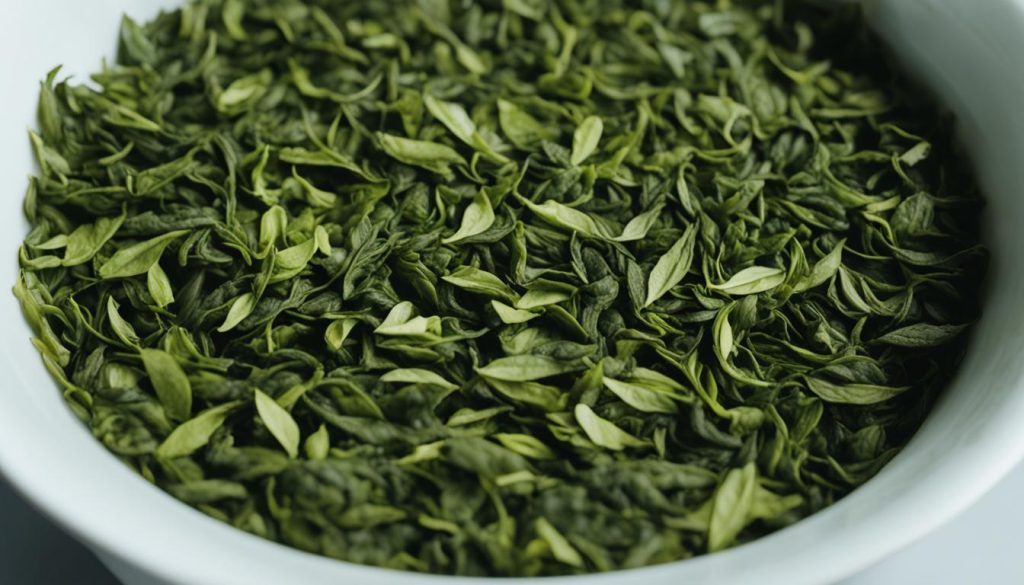
The Importance of Steeping Time
When it comes to brewing the perfect cup of tea, the steeping time plays a crucial role in extracting the desired flavors and compounds from the tea leaves. The duration for which the leaves are in contact with water directly affects the strength and taste of the brewed tea.
Steeping for too short a time can result in a weak-flavored tea, as not all the flavor compounds have had sufficient time to be extracted. On the other hand, oversteeping can lead to bitterness, especially in black tea, as it releases additional tannins.
The optimal steeping time varies depending on the type of tea and personal preference. Generally, a steeping time of 3-5 minutes is recommended for most teas. This allows for a balanced infusion, ensuring the extraction of the tea’s flavor and aroma without bitter notes.
However, some teas, such as herbal teas, may benefit from longer steeping times to extract more flavor and potential health benefits. It’s essential to follow specific guidelines for each type of tea to achieve the desired taste and results. Experimenting with steeping times can lead to discovering your preferred flavors and strengths.
By paying attention to the steeping time, you can enhance the tea flavor extraction and create a delightful and satisfying tea drinking experience.
Steeping Techniques: Gong Fu Cha and Western Style
In the world of tea, there are various steeping techniques that have been developed and embraced by different cultures. Two popular methods are Gong Fu Cha, originating from China, and Western style brewing, widely practiced in Western Europe and North America.
In a traditional Chinese tea ceremony known as Gong Fu Cha, whole leaf tea is steeped multiple times in short durations, using a small teapot or Gaiwan. This method allows for the discovery of distinct flavors with each brew, as the leaves release different characteristics over time. Gong Fu Cha is a mindful and meditative practice that showcases the artistry and appreciation of Chinese tea culture.
On the other hand, Western style brewing involves using a larger teapot or infuser, typically steeping the tea leaves for an extended period of time. This method is known for its convenience and simplicity. The leaves are usually discarded after one or two infusions, with the focus placed on achieving a full-bodied flavor. The addition of milk or sugar is often preferred in Western style brewing to suit individual tastes.
Let’s take a closer look at how these two steeping techniques differ:
| Gong Fu Cha | Western Style Brewing |
|---|---|
| Small teapot or Gaiwan | Larger teapot or infuser |
| Multiple short infusions | Extended steeping time |
| Whole leaf tea | Can use broken or full-leaf tea |
| Distinct flavors with each brew | Strong, full-bodied flavor |
| Focus on the art of brewing | Focus on convenience and simplicity |
Both Gong Fu Cha and Western style brewing offer unique experiences and allow tea enthusiasts to explore the diverse range of flavors and aromas in their favorite teas. The choice between these two methods ultimately comes down to personal preference and the desired tea-drinking experience.
Now that we’ve delved into the world of steeping techniques, let’s move on to another fascinating aspect of tea – the sensory experience of tea and rain.
The Sensory Experience of Tea and Rain
The act of sipping tea during the rain carries a unique sensory experience. The cool weather during the monsoon season enhances taste perception, making the flavors of tea more pronounced and enjoyable. The aroma of tea brewing, combined with the scent of rain, creates a comforting and aromatic experience. Hot beverages, including tea, help regulate body temperature and provide a sense of warmth and comfort. The act of holding a warm cup of tea can also evoke psychological feelings of security and relaxation. Additionally, tea drinking during the monsoon season has cultural significance and is often seen as a mindful practice to enjoy the natural beauty of the rain.
Indulging in a cup of tea while raindrops pitter-patter on the windowsills braces our senses for an extraordinary journey of flavors. The rain-kissed atmosphere during the monsoon season intently invigorates our taste perception, amplifying the subtleties and nuances of tea’s taste profile. With each delicate sip, the cool air heightens our senses, allowing us to relish the intricacies of every flavor note brought forth by the tea leaves.
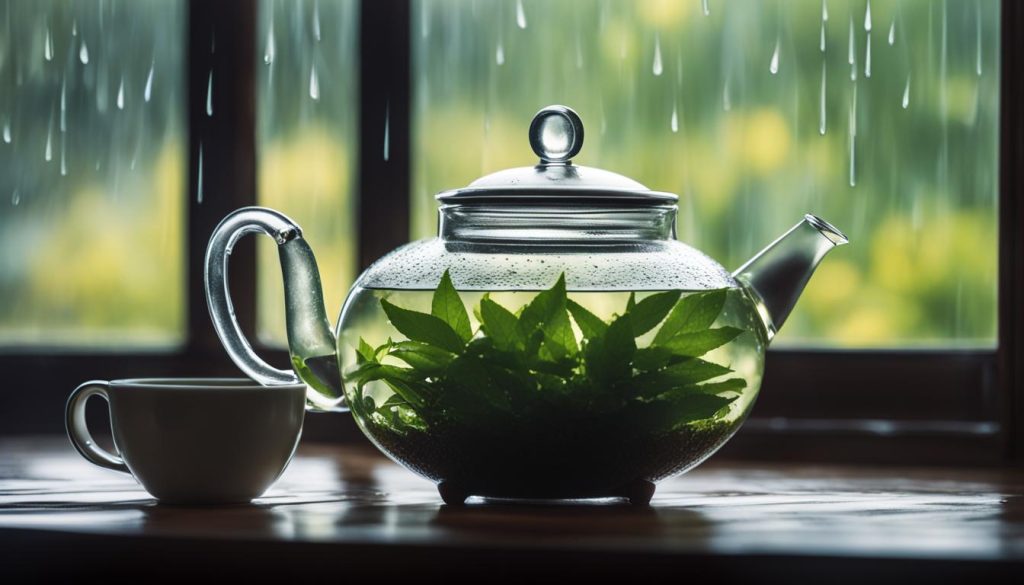
The amalgamation of tea’s aromatic presence with the earthy scent of rain creates a multisensory experience that elevates the pleasure of tea drinking. As the tea brews with precision, its captivating aroma intertwines with the petrichor, evoking a sense of tranquility and connection with nature. The two scents harmoniously dance in the air, infusing every sip with a soothing and aromatic embrace.
Hot beverages, particularly tea, have the power to bestow warmth and comfort to our bodies during cooler weather. The warmth radiating from a cup of tea not only regulates our body temperature but also provides a profound sense of solace. Cradling a warm cup in our hands, we find refuge in the gentle heat as it spreads through our fingertips, enveloping us in a cocoon of psychological well-being.
The ritual of tea drinking during the monsoon season encompasses cultural significance and serves as a mindful practice to appreciate the beauty of nature. Across various cultures, tea enthusiasts immerse themselves in the serene ambiance of rainfall, finding solace and a sense of connection through the simple act of sipping tea. The gentle patter of raindrops on rooftops becomes a backdrop for contemplation, fostering a deep appreciation for the tranquility and harmony that tea brings.
The Impact of Cool Weather on Taste Buds
Taste buds are sensitive to temperature, and when cooler weather arrives during the monsoon season, it can have a fascinating effect on our perception of flavors. As the temperature drops, the complexity of tea flavors becomes more pronounced, allowing us to appreciate the diverse range of tastes present in each cup. This enhancement of flavors is a delightful experience for tea enthusiasts, as it brings out the intricate and subtle notes that create a truly memorable drinking experience.
The interaction between temperature and taste buds is not just a subjective phenomenon. It is backed by science and the way chemical compounds in tea react when exposed to lower temperatures. Different chemical compounds within the tea leaves are released and dissolved at varying rates depending on the temperature, resulting in a more pronounced flavor profile.
The cooling effect on taste buds can unlock hidden layers of the tea’s flavor, revealing intricate and complex notes that are not as prominent in hotter weather. Cool weather can enhance the presence of floral, fruity, or earthy undertones, making each sip a journey of discovery. The interplay of temperature and chemical compounds brings out the unique characteristics of the tea, highlighting its nuanced flavors and making it a truly satisfying sensory experience.
| Cool Weather’s Impact on Taste Buds | Benefits |
|---|---|
| Enhanced perception of flavors | Allows for a deeper appreciation of the diverse range of tastes in tea |
| Heightened flavor complexity | Unlocks the intricacies and subtleties in the tea’s flavor profile |
| Heightened sensory experience | Delights the senses with a more pronounced and nuanced flavor |
Exploring Complexity through Temperature
Tea enthusiasts who prefer cool weather will find that it allows them to explore the complexity of their favorite teas in new and exciting ways. By adjusting the brewing temperature, they can experiment with the interplay between their taste buds and the chemical compounds present in the tea leaves. This exploration adds another dimension to the tea-drinking experience, unraveling the hidden depths and unique characteristics that are waiting to be discovered.
The Role of Aroma in Taste Perception
Aroma plays a significant role in our perception of taste. When we brew tea, the delightful scent that wafts from the cup interacts with our olfactory receptors, heightening our overall flavor experience. The aroma is not only a pleasurable addition to the tea-drinking process but also an essential component in our ability to distinguish and appreciate different flavors.
The steam rising from a freshly brewed cup of tea carries over 600 volatile compounds that contribute to a range of sensory experiences. These compounds include floral, fruity, sweet, malty, and earthy scents, each enhancing the complexity and depth of the tea’s flavor profile. The combination of these aromatic compounds creates a rich tapestry of sensory experiences that engage not only our taste buds but also our sense of smell.
In the monsoon season, the humidity in the air further enhances the olfactory sensation, making the tea-drinking experience even more delightful. The moisture in the atmosphere can amplify the tea’s aroma, enveloping us in a comforting and aromatic cloud. As we take each sip, the aroma continues to contribute to our overall sensory experience, making our tea time more enjoyable and satisfying.
The Comfort of Hot Beverages
Hot beverages, such as tea, offer a sense of comfort and solace, particularly during the rainy season. They play a vital role in regulating our body temperature and providing a much-needed warmth when the external environment turns cooler. The act of holding a warm cup of tea not only helps maintain our body temperature but also evokes a psychological comfort reminiscent of the warmth and security associated with human touch and being in a cozy environment.
In addition to the physical benefits of thermoregulation, hot beverages carry cultural significance in many parts of the world, making them a source of comfort and connection to traditions and heritage. It is during these rainy seasons that the warmth and enjoyment derived from sipping tea hold a special meaning and evoke a sense of belonging and familiarity.
The cultural significance of hot beverages extends beyond their warmth and physiological effects. In various societies, tea ceremonies and rituals are intertwined with the rainy season, symbolizing mindfulness, appreciation of nature, and the comfort that comes with embracing the changing seasons. Engaging in these mindful practices fosters a deeper connection between individuals and their environment, allowing them to find solace and contentment in the simple act of enjoying a cup of tea during the rain.
| The Comfort of Hot Beverages | ||
|---|---|---|
| Benefits | Physical Comfort | Cultural Significance |
| Regulates body temperature | Maintains warmth from within | Symbolizes mindfulness and connection with nature |
| Evokes psychological comfort | Provides a sense of security and relaxation | Fosters appreciation of traditions and heritage |
| Enhances the enjoyment of changing seasons | ||
Through its multifaceted importance, tea and other hot beverages hold a special place in our hearts and traditions, offering a unique source of physical and psychological comfort, as well as serving as a bridge to cultural connections and cherished moments.
Cultural Connections and Tea Drinking in the Monsoon Season
Tea drinking during the monsoon season holds immense cultural significance and is accompanied by rich traditions and rituals. For centuries, communities around the world have embraced the practice of brewing a cup of tea as the rain begins to fall, connecting with their roots and the natural world around them. This timeless tradition promotes mindfulness and a deep-seated connection with nature.
The act of savoring a warm cup of tea during the rain offers a sense of comfort and relaxation. As droplets cascade from the sky, individuals find solace in the soothing ambiance it creates, taking a moment to pause, reflect, and bask in the simple pleasures of life. This mindful practice allows us to fully immerse ourselves in the present moment, fostering a sense of tranquility and rejuvenation.
Tea drinking in the monsoon season becomes a multi-sensory experience, awakening our senses to the sights, sounds, and scents of the rain. As we sip on our favorite tea blends, the gentle patter of raindrops resonates with the delicate clinking of teacups, further enhancing the connection between our inner selves and the natural world. This sensory journey leads to a harmonious embrace of cultural traditions, mindfulness, and the unparalleled comfort found in a steaming cup of tea.
